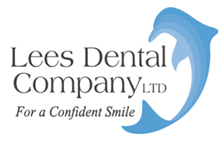Bicon Dental Implants
What are implants?
Missing teeth can often be replaced by implants. Implants act like the roots of teeth. After they have been fitted and have healed in place, dentures or crowns may be attached to them. When dentures are held in place by implants they do not slip around. If crowns are fitted on implants they act like normal teeth.
There are various types of implants; however the most commonly placed throughout the world are often described as root-formed or endosseous implants. These generally have a cylindrical form. The success and rapid growth in popularity of the root-form of the implant is largely due to its predictable behaviour when trying to achieve a rigid fixation with the surrounding bone and maintenance of this state throughout many years of function. This is the form that Bicon dental implants placed in this Practice are.
Implants can only be placed if there is enough bone present in the jaw. When teeth are lost, the bone around the teeth gradually disappears. If too much bone has been lost it is sometimes possible to grow new bone into its place.
What are the alternatives?
For people who have NO remaining teeth the alternatives are:
- Complete dentures
- Implants which secure the dentures in place
- Implants which secure crowns in place.
- For people who have SOME of their own teeth the alternatives are:
- Crowns and bridges supported by implants and/or teeth
- Partial dentures secured by implants and/or teeth
- Partial dentures supported by teeth
- Bridges supported by teeth
There are other options other than implants for missing teeth and it is important to know the details, advantages and disadvantages of each.
Options for missing teeth:
Do nothing
If a tooth is missing for a period of time it can cause movement of the adjacent teeth, often tipping into the space and movement of the tooth that used to bit against the missing one. This often leads to difficulty in cleaning, problems biting and overload of remaining teeth. On going loss of bone may mean that if a gap is left for too long the bone may be lost and implants not possible.
Provision of a bridge:
A bridge attaches to adjacent teeth. This means that these teeth usually need to be cut down for crowns with risks of damage and possible death to the live part, the 'nerve', inside the tooth. The teeth either side then need to take the 'load' placed on the missing tooth. If there is a problem with any part of the bridge then the whole thing will usually have to be removed. The life expectancy of a bridge is usually only 10 -12 years. Because a bridge attaches teeth together cleaning can often be quite difficult. Bridges are quite costly items. This treatment means no surgery is necessary, it is 'fixed in' treatment often taking only 2 visits.
Dentures, also known as Plates:
Dentures can be removable and are bulky and 'foreign bodies' in the mouth. They often cause food trapping and risk decay and gum problems around adjacent teeth. They may affect speech and there may be a degree of movement. Dentures need regular change or adaption to fit well and generally their life expectancy is only 5 – 8 years (possibly 10 years for a metal based denture).
Advantages are that there is no surgery, relatively low costs and only a few weeks to completion.
Implants:
Implants take some time to complete, from start to finish typically 3 – 4 months. Placement of implants does have some risks although complications are rare due to the use of radiographs and stents to identify adjacent structures. The placement of any implant can cause damage to the adjacent teeth or minor bone fractures, sometimes healing can be protracted and sometimes implants can fail to integrate (the bone does not grow onto the surface of the implant). For implants placed in the upper jaw there may be inflammation of the sinus. For implants placed in the lower jaw there may be damage to a nerve within the jaw leading to a loss of sensation in the lip or tongue although this is usually temporary and rare.
The advantages of implants are that they are fixed in position, there is no possibility of decay, adjacent teeth are not involved, they function like real teeth and have well documented longevity. There are cheaper options than implants but over their life span they are possibly more economical than other options.
Implants can fail. This is more likely in smokers, poorly controlled diabetics, the immune-suppressed or those with poor oral hygiene. Sometimes implants fail for no obvious reason. However implant success is well over 90%. Healing times vary between individuals but normally an implant will be integrated in 8 – 12 weeks. Because of the varying nature of healing and different responses to medical situations implants cannot be 100% guaranteed.
Poor oral hygiene and smoking can damage bone support around implants leading to the need for surgical repair or implant removal. Once implants are placed there is evidence to show that they stimulate bone growth and bone health and density in that area. After placement of an implant there is usually little discomfort and few complications. Bruising in the area is possible, as is slight temporary swelling. Occasionally there is discomfort that would warrant the taking of a painkiller.
124 St Aubyn Street
New Plymouth
Phone. 06 759 1630

